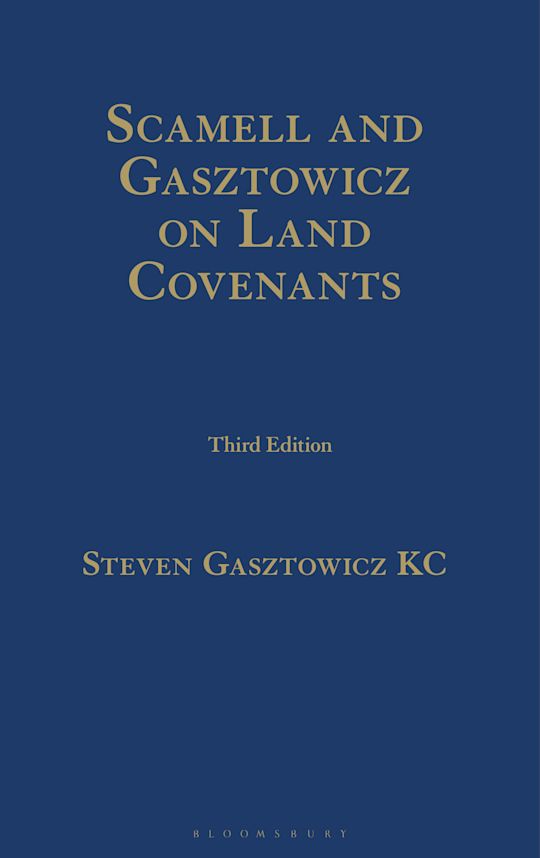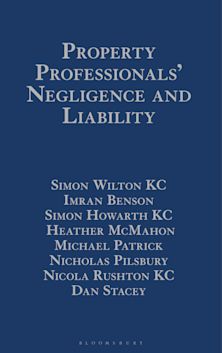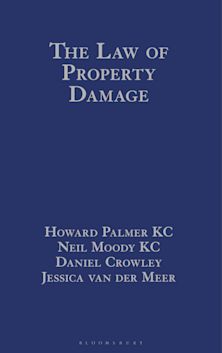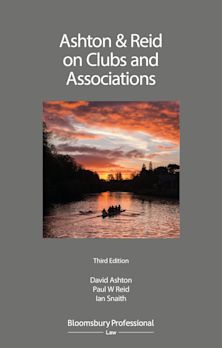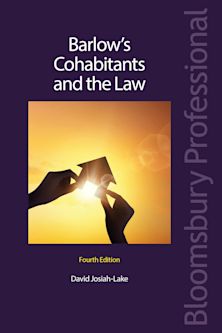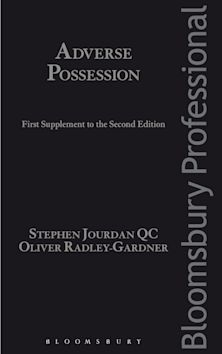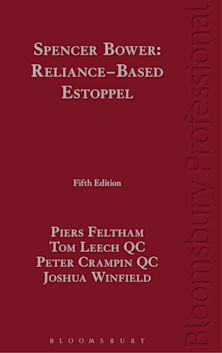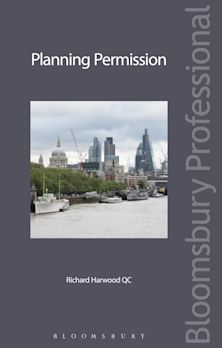Bloomsbury Professional Home
Description
This book covers a complex and broad area of law for property lawyers to contend with. Dealing with the impact of covenants on land affects most conveyancing transactions and is also of vital importance to landowners, developers and others. The volume of case law on this topic is extensive.
This book includes coverage of positive covenants and planning covenants and is updated to include the major Supreme Court case on restrictive covenants, Alexander Devine Children's Cancer Trust v Housing Solutions Ltd [2020] 1 WLR 4783 and other major Court of Appeal decisions. It also deals with the special position of local authorities in relation to land covenants, and has coverage on freeing land from restrictions.
The book is divided into four main parts:
Part I – Restrictive Covenants;
Part II – Positive and Negative Covenants;
Part III - Planning Obligations;
Part IV - Reform.
This title is included in Bloomsbury Professional's Property and Land Law online service.
Table of Contents
Preface
Table of Statutes
Table of Statutory Instruments
Table of Cases
Introduction: Covenants generally
Part I Restrictive covenants
1. Meaning of 'restrictive covenant' (including general consideration of requirements for transmissibility)
2. The benefit of the restrictive covenant
3. 1: Original covenantees
4. 2: Covenant beneficiaries
5. 3: Subsequent owners and occupiers of land benefited by the restrictive covenant as competent claimants: overview
6. Subsequent owners and occupiers of benefited land where there is annexation
7. Competent claimants express assignment
8. Competent claimants: building schemes
9. The running of the burden of restrictive covenants
10. Restrictive covenants and public law
11. The construction of restrictive covenants
12. Restrictive covenants and competition law
13. Remedies for breach of a restrictive covenant
14. Freeing the title from unenforceable restrictive covenants
15. Extinguishment, discharge and modification of restrictive covenants
16. The modification and discharge of restrictive covenants and agreements by the Upper Tribunal (Lands Chamber) pursuant to section 84(1) of the Law of Property Act 1925
17. The scope of the Upper Tribunal's powers under section 84(1) of the Law of Property Act 1925
18. The four alternative grounds giving rise to the Upper Tribunal's powers
19. The grounds giving rise to the Upper Tribunal's powers: paragraph (a)
20. Section 84(1) of the Law of Property Act 1925: paragraph (aa)
21. Section 84(1) of the Law of Property Act 1925: paragraph (b)
22. Section 84(1) of the Law of Property Act 1925: paragraph (c)
23. The power of the Upper Tribunal to award compensation
24. Procedure on an application to the Upper Tribunal under section 84(1) of the Law of Property Act 1925
Part II Positive covenants and negative covenants which are not restrictive covenants
25. Meaning of 'positive covenants' and of 'negative covenants which are not restrictive covenants' and frequency of use
26. Persons able to claim the benefit of positive covenants: (I) Original covenantees
27. Persons able to claim the benefit of positive covenants: (II) Subsequent owners and occupiers of the benefited land
28. The burden of positive covenants
29. Methods of securing the indirect running of the burden of a positive covenant
30. Remedies for breach of positive covenants
31. Covenants and commonhold
Part III Planning obligations relating to land
32. Planning obligations
Part IV Reform
33. Reform of the law relating to restrictive covenants: Law Commission proposals
Product details
| Published | 31 Oct 2023 |
|---|---|
| Format | Ebook (Epub & Mobi) |
| Edition | 3rd |
| Extent | 1200 |
| ISBN | 9781526524454 |
| Imprint | Bloomsbury Professional |
| Publisher | Bloomsbury Publishing |

ONLINE RESOURCES
Bloomsbury Collections
This book is available on Bloomsbury Collections where your library has access.

